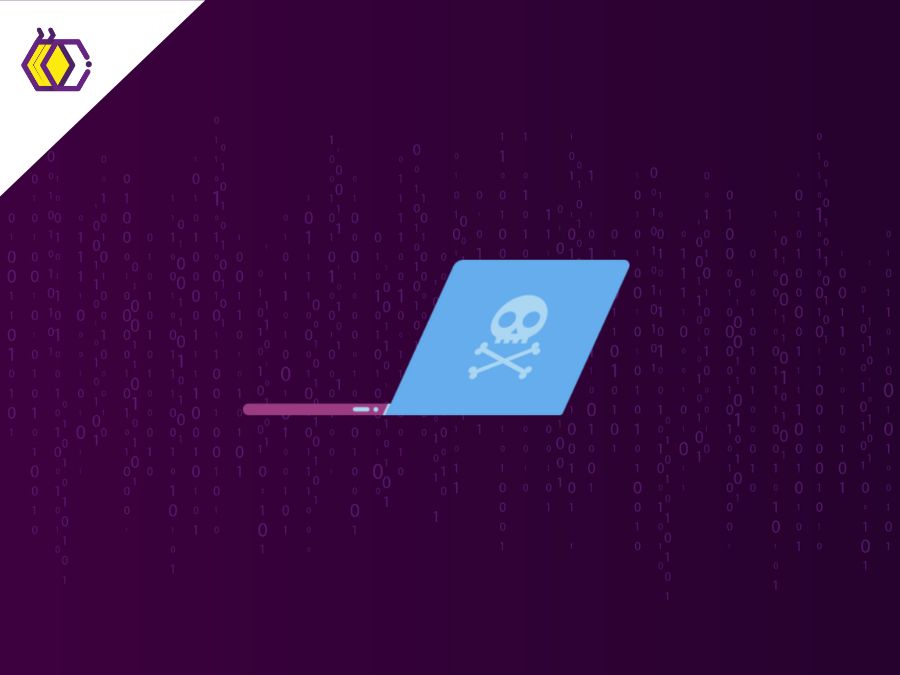
Git Commands
(13 minutes of reading) Git is a powerful version control system used by developers all over the world. This makes tracking code changes and collaborating with other developers easier and more efficient. Knowing the most important Git commands can make managing your code even simpler. In this article, we'll explore some of the most important Git commands you need to know before you can use this system effectively in your development process. WHAT IS GIT? Git is a version control system that helps developers keep track of changes to their code. It is widely used by software developers and has become an invaluable tool in the industry. Git uses git commands, which are simple instructions that allow users to commit changes, organize them, and push them to a remote repository like GitHub. Git command-line interface allows developers to easily manage different versions of their code, collaborate with other team members on projects, and create backups for their work in case something goes wrong. With its easy-to-use commands, it can be used for both small projects and large projects involving several people. It also allows users to easily synchronize their local repositories with remote ones, so they don't have to worry about manually merging changes from one source to another. LET’S LEARN SOME GIT COMMANDS EVERY DEVELOPER SHOULD KNOW As mentioned earlier, Git is a powerful and versatile version control system that allows developers to manage, store, and collaborate on projects. As part of the software development process, it's important that all developers learn to use Git effectively in order to track changes properly and collaborate with other team members. Below are some essential Git commands that every developer should know. 1. GIT CLONE Git clone is a powerful tool in the software development world. It allows developers to make copies of online repositories quickly and easily, allowing them to work locally or share with others. Git clone also makes it simple for multiple people to collaborate on a project without having to manually upload and download files every time someone makes a change. Cloning git works by creating what is known as a 'local repo' which essentially makes an exact copy of the remote repo you are cloning from. To do this, you enter the URL of the remote repository in your command line interface, saying that you want to download all the contents of that repository and store it in your local directory. 2. GIT ADD Git add is a powerful command line tool for managing files in the git repository. It can be used to add individual files, multiple files, and entire directories to the staging area of a git repository. The git add makes it easy for developers to track changes to their codebase by organizing them into commits. Additionally, the command allows developers to specify which parts of a file they want to send to the staging area. That way, they can ensure that only relevant or desired changes are added and unwanted ones are left out. Git command add also allows developers to preview changes before making them public, to avoid mistakes and maintain quality control. Finally, with this tool, users have an easier way to time tracking their progress as each commit will have its own version ID number, which makes it easy to compare versions and rollback if needed. 3. GIT COMMIT Git commit is a term used to describe the process of saving changes to git's version control system. It refers to taking a snapshot of all changes made since the last commit and saving them as a single point in time. This allows developers to track their progress, go back to previous versions, or collaborate with others on their codebase. Git commits are essential for successful development projects as they provide an audit trail of how and when each change was made. Each commit should include a short description so other developers can easily understand it later. Commits also allow users to better manage their branches and keep track of what has changed between each software release. Also, the git commits help ensure that only tested code snippets make it to production systems, allowing teams to review proposed changes before merging them into official releases. 4. GIT PUSH Git push is a powerful tool when it comes to version control. It helps developers and teams keep track of changes made to the source code, ensuring that all team members are on the same page in terms of project development. Also, git push can be used to synchronize local with remote repositories, ensuring that everyone has access to the latest versions of files stored in the repository. The use of git push ensures that anyone making a change commits it correctly and allows users to correct any mistakes made before submitting their changes live. With this feature, developers and teams can easily undo any errors or omissions in their code without having to start over from scratch. Also, git push also tracks who made what changes and when, providing an easy way for teams to review each other's work as they collaborate on projects. 5. GIT PULL Git pull is a powerful command line tool used to merge remote branches with local ones. Git command pull allows developers to retrieve the latest version of their projects from the remote repository and easily update it with their local version. With this tool, developers can stay on top of all the changes made by other collaborators or team members. It's an incredibly useful feature that helps improve the speed and accuracy of development projects. By allowing quick updates and merges, git pull allows teams to quickly identify and resolve conflicts in code before they become too complicated or difficult to manage. Furthermore, it also facilitates collaboration between large teams as all members can easily access and use the same files as each other. 6. GIT MERGE Git merge is a powerful tool used in the popular version control system git . With this command, developers can combine multiple commit sequences into a unified timeline. This allows them to apply changes from different branches and sources neatly. Git merge command works by merging the histories of two or more branches into a new branch that contains all the combined changes. This makes it easy for developers to move code from one branch to another without overwriting existing data or introducing conflicts. The merge operation also ensures that any modifications made to either side are properly combined so that no information is lost during the process. Furthermore, git merge also allows developers to merge stored revisions and track changes over time more efficiently. Using this function, they can quickly identify conflicts between file versions and undo them before they cause problems in the development workflow. 7. GIT RESET Git reset is a powerful command that allows users to undo changes to their local repository. It allows developers to go back in time and fix bugs by reverting the working tree back to a given commit. With git reset, you can discard the most recent commits or remove files that have already been staged for the next commit. Using git reset can be confusing if you don't understand its three options: soft, mixed, and hard. The soft option preserves all changes made since your last commit while allowing them to be edited again before being committed; mixed is the default option that only resets the changes made since your last commit, but keeps them as part of your working tree; the hard option resets all your local changes and overwrites committed modifications with those from another branch or specific commit point in time. GITHUB GitHub is a powerful platform that has revolutionized the way software developers collaborate, code and share their work. (If you want to know more about GitHub, read this text) It is a web-based repository for hosting and managing source code projects in an organized way. GitHub allows developers to work together on projects and maintain version control and access to different branches of development. With GitHub, you can easily track changes made by team members in real time. This helps streamline project collaboration by eliminating the need to manually track each contributor's progress. The platform also provides visibility into development processes so you can see who is working on what at any given time. Also, it makes it easy to issue commands such as merging changes or marking milestones along the way. With its powerful set of tools, GitHub allows teams to quickly iterate on their projects, ensuring quality control throughout the process. DOMINATING GIT Git is an essential part of the coding process, and becoming a Git expert can be a rewarding journey for any developer. It's no surprise, then, that mastering Git commands and understanding the various workflows it offers has become a necessary skill for many software engineers. With its power to manage, collaborate, and track code changes, understanding how to use Git effectively can open new opportunities in your programming career. The good news is that you don't need a degree or a lot of experience to master Git - just practice! There are many online tutorials, courses, and resources available to help teach you the basics and beyond. Taking the time to learn more about Git can also equip you with valuable knowledge that will come in handy when working on larger projects with multiple developers involved. What did you think of our article? Be sure to follow us on social media and follow our blog to stay up to date!
Share this article on your social networks:
Rate this article:
Other articles you might be interested in reading
- All (185)
- Career (38)
- Competitions (6)
- Design (7)
- Development (112)
- Diversity and Inclusion (3)
- Events (3)
- History (15)
- Industries (6)
- Innovation (38)
- Leadership (8)
- Projects (23)
- Well being (18)

Cloud Computing and Digital Transformation and Social Impact
(5 minutes of reading)
In recent years, we have witnessed a quiet revolution that is fundamentally reshaping the way we live and work. At the center of this transformation is cloud computing, a technological innovation that transcends physical limits and opens up new horizons of possibilities. This text will talk about this subject that is transforming the IT area. Come read!...

Tech in Education
(9 minutes of reading)
In the contemporary educational landscape, technology plays an increasingly crucial role, revolutionizing not only the way students learn, but also how educators teach. As we adapt to a digitally connected world, new trends are emerging that promise to further transform the way education is designed and delivered. Come read this text to learn about the latest trends in educational technology and explore their impact on student development and the evolution of teaching. Come with us!...

Ethical Software Development
(5 minutes of reading)
Developing software is a complex activity that goes far beyond simple coding. It involves a meticulous process of planning, design, implementation, testing and maintenance to create reliable, efficient, and secure systems. However, in addition to seeking functionality and performance, developers must also carefully consider the ethical aspects of the software they are creating. In this text we will talk about ethics and responsibility when developing software. Come read!...

Balance Between Professional and Personal Growth
(6 minutes of reading)
In a world driven by the constant search for professional success, we often find ourselves immersed in our careers, forgetting the fundamental balance between professional and personal growth. As we dedicate hours to coding, solving problems, and advancing our technical skills, it's essential to remember that our journey as human beings go beyond the lines of code. Come read our text and see super cool tips on how to achieve this balance!...

How to Highlight Programming Competition Awards on your CV
(6 minutes of reading)
In a field as dynamic as software development, it is crucial to stand out from the crowd. An exceptional way to do this is through recognition and awards won in competitive programming competitions. In addition to demonstrating your superior technical skills, these awards attest to your ability to solve complex problems, collaborate as a team, and deliver exceptional results under pressure. Today we will talk about the curriculum and competitions, are you interested? Come with us!...

Open Source and Collaboration
(5 minutes of reading)
If you're ready to start exploring the world of open source, be aware that you will encounter many learning opportunities and challenges. Collaboration is at the heart of this environment, driving innovation and influencing the direction of technology. Come read our text to find out more about this subject!...

 Innovation
Innovation 

